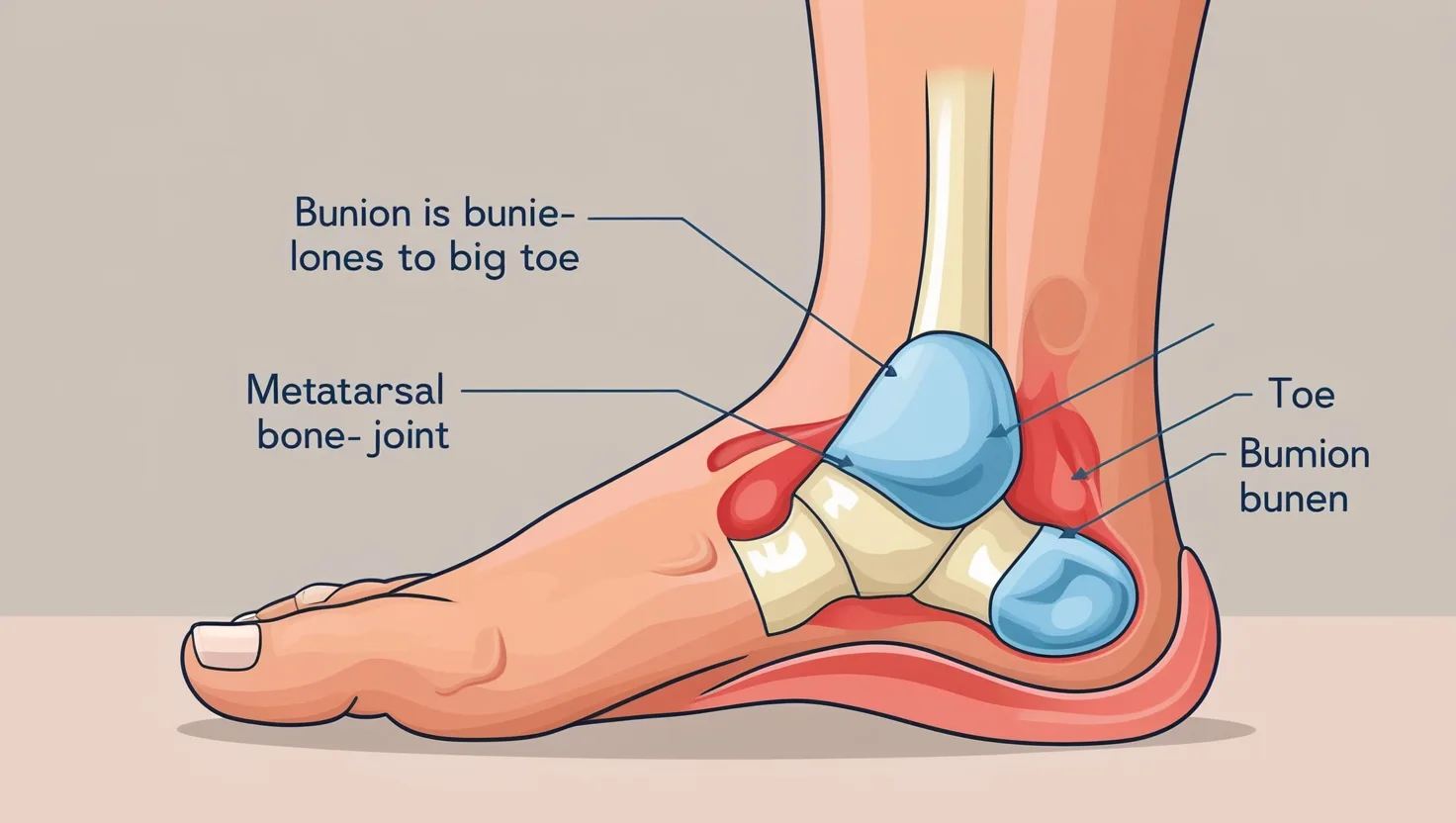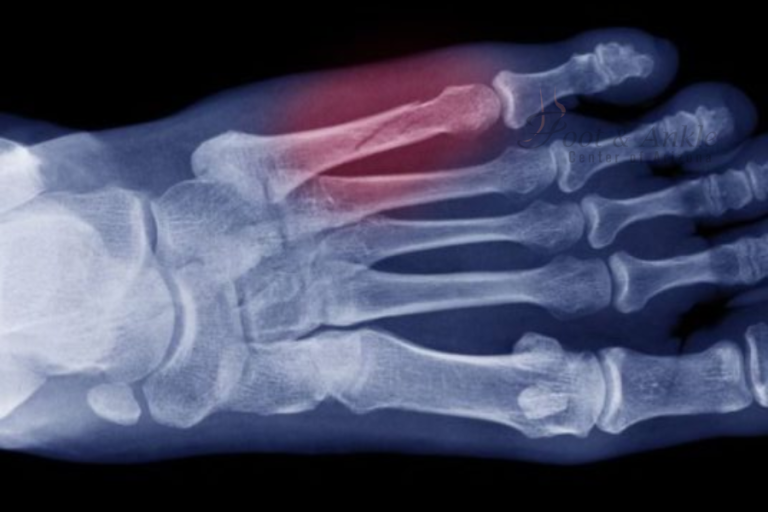An ankle sprain is a common injury one experiences from any kind of activity, including sports and daily activities. Proper treatment and recovery an important aspects to get one back to normal activities quickly and also to avoid future complications. Here at the Foot and Ankle Center of Arizona expert ankle sprain treatment is done in Scottsdale, AZ, by Dr. Kris A. DiNucci, DPM, FACFAS. How to Heal a Sprained Ankle: Treatments and Recovery Strategies
Understanding a Sprained Ankle
An ankle sprain is an injury to a ligament that supports the ankle. More specifically, one or more of the ligaments surrounding the ankle bones overstretch to their limit and even tear or strain the ligament. Usually, this happens when the ankle rolls or twists in an unnatural manner. Symptoms of a sprained ankle can include the feeling of sharp pain, swelling, possible bruising, and issues with walking.
How to Heal a Sprained Ankle: Immediate Steps
1. Rest and Protection:
Resting the foot is the first step in how to heal a sprained ankle. It is quite important to avoid weight on the ankle that is injured. One can make use of an ankle brace sprain or may avail the service of an ankle splint for sprain. This will give the necessary support required for the ankle. It will reduce movement thus helping in the process of healing.
2. Ice Therapy:
The application of ice to the sprained ankle reduces swelling and even numbs the ankle to kill the pain. How to go about it: apply ice for 15-20 minutes every 1-2 hours in the first 48 hours following injury. Be sure to wrap the ice pack in a cloth to avoid direct contact with the skin.
3. Compression:
Compression helps to reduce swelling. To compress the injury, use an elastic bandage or a wrap with compression on the injured area. The wrap should be snug but not so constricting that it causes more problems.
4. Elevation:
Above the level of your heart is the key to keeping the swelling down. Elevate your hurt ankle above the level of your heart whenever possible. Let fluid drain away from the injured area. When you are resting or sleeping, prop your foot up above the level of your heart on pillows.
5. Professional Help:
When one is experiencing more serious sprains, or if the symptoms have failed to get better, this calls for professional ankle sprain treatment. At this moment, one needs to seek out a doctor like Dr. Kris A. DiNucci, DPM, FACFAS, at Foot and Ankle Center of Arizona, who can make an appropriate examination and recommend the proper treatments.
Treatment Options Available
1. Medications:
The pain and associated inflammation can be relieved through over-the-counter pain relievers such as ibuprofen or acetaminophen. Follow the dosing instructions and consult with a healthcare professional if you are worried about dosing instructions.
2. Physical Therapy:
Once the initial pain and swelling have gone down, physical therapy can help with recuperation from ankle sprains. The physical therapist will provide an individualized exercise program to strengthen, and increase flexibility, and balance around the ankle.
3. Ankle Brace or Splint:
In the process of healing, extra support can be achieved in an ankle brace or an ankle splint in a few different ways. The ankle sprain brace is utilized for protection and to stabilize the joint to avoid further injury, while an ankle sprint for a sprain can provide a more rigid support structure to stabilize the ankle in a non-weight-bearing position.
More severe injuries sometimes require treatments such as corticosteroid injections, or even surgery, especially if the sprain is particularly bad or if there has been substantial ligament damage. Dr. Kris A. DiNucci, DPM, FACFAS can go into this in greater detail with you if that becomes a concern.
Recovery and Rehabilitation
Recovery is very important so that you can recover correctly and not have to suffer from a future complication. Here are some tips on how to heal a sprained ankle and promote effective ankle sprain recovery:
1. Gradual Weight Bearing:
As the ankle starts healing, begin to put weight into the ankle gradually. Start with very soft movements and increase the intensity as tolerable. Crutches or a walking assistant in this regard will help avoid additional stresses on the hurt ankle.
2. Strengthening Exercises:
Strengthening can be achieved through rebuilding muscle strength around the ankle. Such exercises include toe raises, ankle circles, and resistance band exercises to help improve stability and avoid further injury.
3. Flexibility Training:
Flexibility training is incorporated into your recovery exercises. Stretching exercises can help maintain and improve the range of motion in the ankle, crucial for the overall health of the joint.
4. Monitoring Progress:
If unusual symptoms appear, or if recovery is taking longer than expected, follow up regularly with your doctor. Dr. Kris A. DiNucci, DPM, FACFAS will be happy to further support you in those areas of need and make modifications in treatment accordingly.
Frequently Asked Questions About Healing a Sprained Ankle
1. How long does it take to heal a sprained ankle?
Recovery from a sprained ankle takes various durations based on the seriousness of the injury. Mild sprains can recover in a matter of weeks, while serious injuries can take months to recover from. Acceleration of this process is possible in case proper treatment and recovery protocols are followed.
2. Can I walk on a sprained ankle?
For the initial stages, it is best not to walk on a sprained ankle to avoid causing further injury. As it heals, and under the guidance of a health professional, you may begin to bear weight into the ankle.
3. Should I use heat or ice for a sprained ankle?
It is better to use ice within the first 48 hours from the injury in order not to provoke swelling and pain; later on, when this period is over, you may apply heat to relax the muscles around the injured ankle.
4. When should I see a doctor for a sprained ankle?
Medical attention is needed when the pain is severe, or a person cannot bear weight on the ankle, or the symptoms are not getting better after treating them at home. In this regard, Dr. Kris A. DiNucci, DPM, FACFAS can give an appropriate and proper assessment to determine what should be done.
5. Does physical therapy help a sprained ankle?
Physical therapy is a good form of recovery after an ankle sprain. A physical therapist will develop a personal set of exercises to build ankle strength and flexibility, as well as balance.
Conclusion
Understanding how to treat a sprained ankle requires knowledge of immediate care, proper treatment, and recovery methods. At Foot and Ankle Center of Arizona, ankle sprain treatment is provided with expertise while supporting you through each step of your recovery. Dr. Kris A. DiNucci, DPM, FACFAS is here to tailor his care to you and get you back to your normal activities as soon as possible. If you have any other questions or if you need professional help for your sprained ankle, then don’t hesitate to contact us today and set up an appointment.





